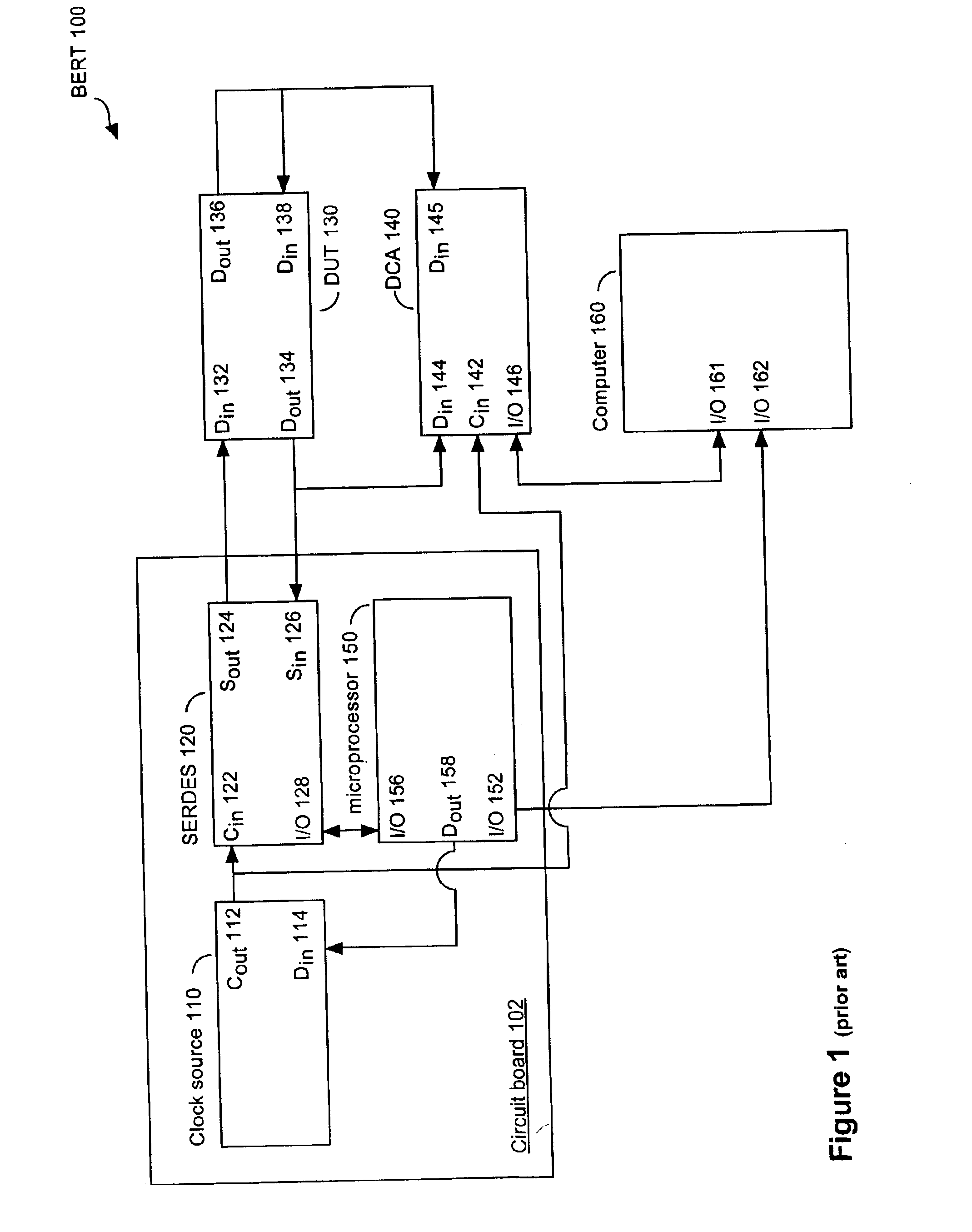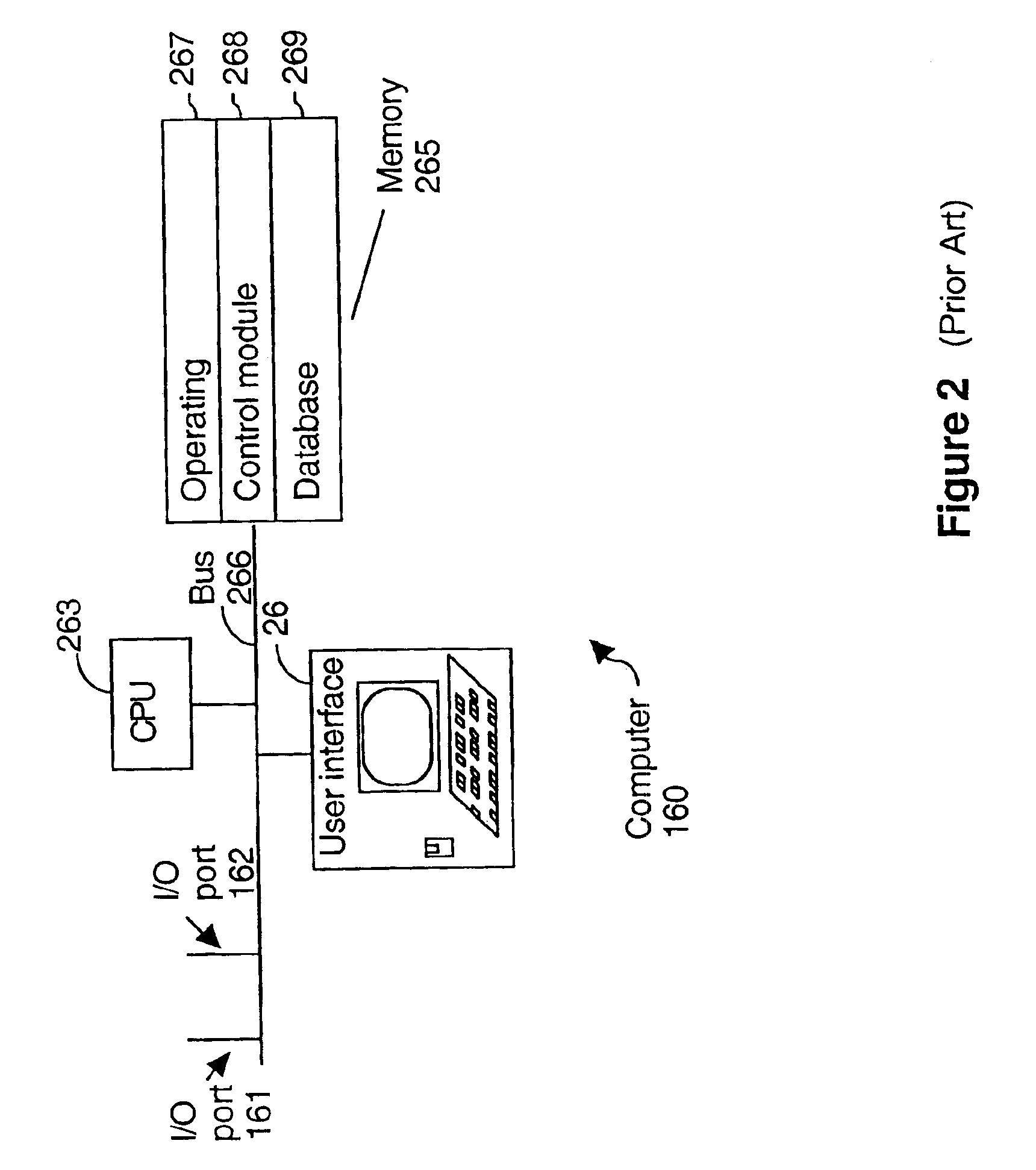System and method of processing a data signal
a data signal and data processing technology, applied in the direction of noise figure or signal-to-noise ratio measurement, instruments, transmission monitoring, etc., can solve the problems of random jitter, bit error, and inability to reliably test duts at frequencies over 1.0625 gbps, so as to reduce or eliminate jitter from serial encoded data
- Summary
- Abstract
- Description
- Claims
- Application Information
AI Technical Summary
Benefits of technology
Problems solved by technology
Method used
Image
Examples
Embodiment Construction
[0030]Referring to FIG. 1, there is shown a prior art BERT 100 for testing a DUT 130. As illustrated in FIG. 1, BERT 100 includes a circuit board 102, a clock source 110, a SERDES 120, a digital communication analyzer (“DCA”) 140, a microprocessor 150, and a computer 160.
[0031]The circuit board 102 typically comprises an insulated board on which interconnected circuits and components (e.g., the clock source 110 and the SERDES 120) are mounted. The circuit board 102 typically provides power and ground connections for the various components mounted thereon.
[0032]The clock source 110 is designed to provide a clock signal at a desired frequency. The clock source 110 may comprise a single, self contained circuit (e.g., an AMPTRON® or Cardinal Components, Inc. crystal based oscillator). Such circuits are preferably single frequency circuits, but the clock source 110 may also have multiple-frequency capability. If so, the microprocessor 150 or a user may select, through a plurality of pins...
PUM
 Login to View More
Login to View More Abstract
Description
Claims
Application Information
 Login to View More
Login to View More - R&D
- Intellectual Property
- Life Sciences
- Materials
- Tech Scout
- Unparalleled Data Quality
- Higher Quality Content
- 60% Fewer Hallucinations
Browse by: Latest US Patents, China's latest patents, Technical Efficacy Thesaurus, Application Domain, Technology Topic, Popular Technical Reports.
© 2025 PatSnap. All rights reserved.Legal|Privacy policy|Modern Slavery Act Transparency Statement|Sitemap|About US| Contact US: help@patsnap.com



